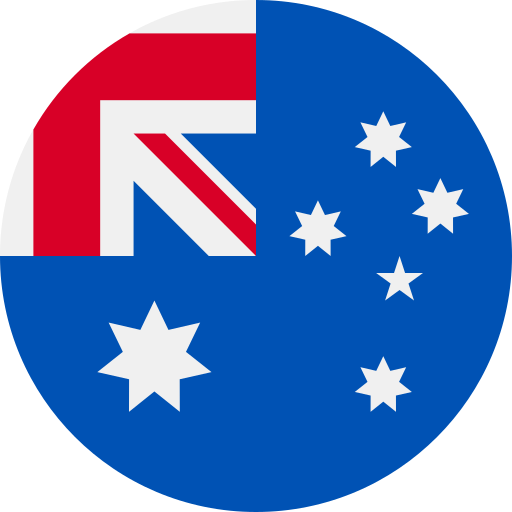Key Takeaways
- Historical Roots: Australian English evolved from British English, influenced by Indigenous languages and immigrant cultures since the arrival of the First Fleet in 1788.
- Distinctive Features: The language is characterized by unique pronunciation, vocabulary, and slang that set it apart from other English varieties, reflecting Australia’s diverse heritage.
- Linguistic Evolution: New words and expressions continue to emerge due to cultural shifts driven by technology and globalization, making Australian English a dynamic form of communication.
- Media Influence: Television, film, and social media significantly shape language trends in Australia, popularizing specific dialects and fostering rapid slang adoption among younger generations.
- Cultural Identity: Understanding the evolution of Australian English provides deeper insights into the identity of Australians and their multicultural society through its rich linguistic landscape.
Ever wondered how Australian English became the unique and vibrant language it is today? The evolution of Australian English is a fascinating journey that reflects the rich tapestry of Australia’s history, culture, and diverse influences. From its colonial roots to the modern slang you hear on the streets, understanding this evolution can give you deeper insights into not just the language but also the identity of Australians.
Overview of Australian English
Australian English stands out due to its distinct pronunciation, vocabulary, and expressions. It developed from British English after the First Fleet arrived in 1788, mixing with influences from Indigenous languages and immigrant cultures. This blend created a unique linguistic landscape that reflects Australia’s diverse heritage.
You might notice that Australian English features unique slang terms and phrases that differ significantly from other English varieties. Words like “arvo” for afternoon or “fair dinkum” for genuine highlight this playful use of language. Additionally, the accent varies across regions, with broad and cultivated accents being prominent examples.
The evolution of Australian English continues as it adapts to contemporary influences such as technology and globalization. New words emerge regularly, reflecting cultural shifts and trends among Australians. For instance, terms related to social media or modern lifestyles have integrated seamlessly into everyday conversations.
Understanding these nuances makes communicating with Australians more effective and engaging. Familiarity with local expressions not only enhances interactions but also fosters connections in a multicultural society where language plays an essential role in identity and belonging.
Historical Context
Australian English has a rich historical context that shapes its unique characteristics today. Understanding this evolution highlights how language reflects cultural identity and societal change.
Indigenous Languages Influence
Indigenous languages significantly impacted the development of Australian English. Over 250 Aboriginal languages existed before colonization, each contributing words and concepts to the emerging dialect. Terms like “kangaroo” and “boomerang” entered common usage, showcasing Australia’s natural environment and Indigenous culture. This blending enriches Australian English, offering a deeper connection to the land and its original inhabitants.
British Colonization and Early Settlers
British colonization in 1788 marked a pivotal moment for Australian English. The First Fleet brought convicts, soldiers, and settlers who spoke various British dialects. Their interactions with one another created a distinct form of English influenced by regional accents from England, Ireland, and Scotland. As settlers engaged with Indigenous communities, this burgeoning language incorporated local terms while evolving amidst diverse immigrant cultures. Thus began the journey of Australian English as it transformed from its colonial roots into something uniquely Australian.
This historical context illustrates how language evolves through interaction and adaptation over time, creating an authentic voice that resonates with Australians today.
Linguistic Features of Australian English
Australian English showcases distinct pronunciation, unique vocabulary, and colorful slang, reflecting the country’s rich history and cultural diversity. Understanding these features enhances your appreciation for this vibrant dialect.
Pronunciation and Accent Variations
Australian English exhibits a notable accent characterized by its vowel sounds. The accent varies across regions, creating distinctive pronunciations. For instance, you might hear a more pronounced diphthong in urban areas compared to rural settings. Additionally, some Australians drop the final “r” sound in words like “car” or “far,” giving it a unique flair. Listening closely reveals how accents can signal where someone comes from within Australia.
Vocabulary and Slang Development
Vocabulary in Australian English is heavily influenced by Indigenous languages and British origins. You’ll encounter terms that are uniquely Aussie, such as “biscuit” for cookie or “boot” for trunk of a car. Slang also plays a vital role in everyday conversation; phrases like “arvo” (afternoon) or “fair dinkum” (genuine) illustrate this playful aspect of the language. These expressions often reflect cultural nuances and even humor found within different communities across Australia.
As new generations embrace contemporary influences like technology and globalization, you’ll notice ongoing changes in vocabulary too. New words emerge regularly to capture evolving concepts or trends—keeping the language fresh and dynamic.
Understanding these linguistic features not only enriches your knowledge but also deepens your connection with Australia’s diverse culture and identity.
The Role of Media and Technology
Media and technology significantly shape the evolution of Australian English. As platforms for communication expand, they influence language usage, slang adoption, and even pronunciation.
Impact of Television and Film
Television programs and films play a crucial role in popularizing specific dialects and expressions within Australian English. They’re often the first exposure many Australians have to diverse accents or new phrases. Iconic shows introduce audiences to regional vernacular, showcasing characters that reflect authentic Australian experiences. This representation nurtures national identity while also encouraging linguistic diversity as viewers adopt catchphrases or intonations from their favorite programs.
Social Media Influence
Social media accelerates the spread of language innovation across Australia. Users frequently create viral content that introduces fresh terms or redefines existing ones through memes, hashtags, and trends. Platforms like Twitter or Instagram allow for rapid exchange of ideas, leading to widespread adoption among younger generations. You’ll notice how quickly certain slang words circulate online; they can become mainstream overnight thanks to influencers or trending discussions. This dynamic environment fosters a fluid linguistic landscape where Australian English continues evolving in real-time, integrating influences from global cultures while maintaining its distinct character.
Ultimately, media’s role in shaping language reflects broader cultural shifts in Australia, reinforcing connections among communities while embracing change through technology.
Current Trends and Future Directions
Current trends in Australian English highlight its adaptability and ongoing evolution. Digital communication has accelerated language changes, with social media shaping how Australians express themselves. You might notice new slang terms surfacing online, as younger generations influence the language landscape through platforms like TikTok and Instagram.
Emerging vocabulary often reflects cultural shifts and technological advancements. Terms related to digital life, such as “ghosting” or “flex,” easily integrate into everyday conversation. These words illustrate how Australian English absorbs influences from global trends while maintaining its unique characteristics.
The role of voiceovers in various media also impacts the evolution of Australian English. As more content creators seek authentic representations in their projects, they turn to local voice talent who can embody regional accents and dialects accurately. This demand for diverse voice artists encourages a broader acceptance of different linguistic features within Australian English.
Future directions suggest a continued blending of Indigenous languages with contemporary speech patterns. With increased awareness of Indigenous culture, you might see even more integration of Aboriginal terms into mainstream usage, enriching the overall vocabulary further.
In addition, globalization will keep introducing foreign phrases that resonate with Australians. As cross-cultural interactions increase due to travel and technology, your conversations may include borrowed expressions that enhance the richness of the dialect.
As these trends unfold, it’s clear that Australian English remains vibrant and dynamic. The interplay between tradition and innovation ensures that this distinctive form of communication continues to evolve while reflecting Australia’s unique identity.
Conclusion
Understanding the evolution of Australian English reveals much about who you are as a nation. Your language reflects a rich tapestry woven from history, culture, and diverse influences that shape your identity.
As you embrace new trends and innovations while honoring local roots, the distinctiveness of your dialect flourishes. The interplay between traditional vocabulary and modern slang keeps your language fresh and relevant in an ever-changing world.
Looking ahead, Australian English will continue to adapt, incorporating elements from Indigenous languages and global influences alike. This dynamic journey ensures that your unique voice remains vibrant for generations to come.
Frequently Asked Questions
What is Australian English?
Australian English is a distinct form of English that has evolved since British colonization in 1788. It incorporates unique vocabulary, pronunciation, and slang influenced by Indigenous languages and various immigrant cultures, reflecting Australia’s identity.
How did Australian English develop?
Australian English developed from British dialects brought by the First Fleet, blending with local terms from over 250 Aboriginal languages. This evolution created a unique linguistic landscape shaped by Australia’s history and cultural diversity.
What are some unique features of Australian English?
Notable features include distinct vowel sounds, regional accents, and playful slang like “arvo” (afternoon) and “fair dinkum” (genuine). The accent often drops the final “r” sound in words, contributing to its uniqueness.
How do Indigenous languages influence Australian English?
Indigenous languages have significantly enriched Australian English by introducing words related to the environment and culture. Examples include “kangaroo” and “boomerang,” showcasing the deep connection between language and place.
What role does media play in shaping Australian English?
Media influences the evolution of Australian English through television shows and films that popularize specific dialects. Social media accelerates language change as new phrases emerge rapidly among younger generations.
How is contemporary slang evolving in Australia?
Contemporary slang evolves mainly through digital communication platforms like TikTok and Instagram. New terms related to modern life—such as “ghosting”—reflect cultural shifts while integrating global trends into everyday conversations.
What does the future hold for Australian English?
The future of Australian English will likely involve further blending with Indigenous languages and increased globalization. As awareness of cultural diversity grows, new phrases will continue to enrich this dynamic dialect.







